Cosmic Curiosities
“For when I look at the moon, I do not see a hostile, empty world.
I see the radiant body where man has taken his first steps into a frontier that will never end.” - David Scott, Gemini and Apollo Astronaut
Meteor Drip
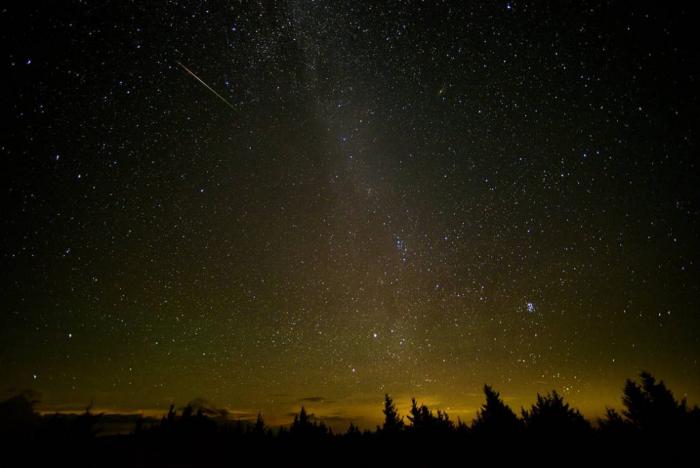
The Perseids are coming! The best night for this annual meteor shower will be August 12-13, though the night before or after can still delight. Do not expect to see “shooting stars” raining down from the sky; it’s more like a slow drip.
Imagine watching a faucet for a leak: You can wait and wait before you see a drip and decide to call the plumber. The Perseids are similar: One must be patient waiting for the next meteor to race across the sky. You might only observe a meteor every minute or two, and that’s under ideal conditions (meaning dark, clear skies far from street lights); if you have city lights around, your meteor delay is even longer.
So, why go? Because meteor gazing is just so cool! It’s always fun to exclaim, “Look, look, there’s one—awesome!” Of course, long before you finish speaking, the meteor is usually gone!
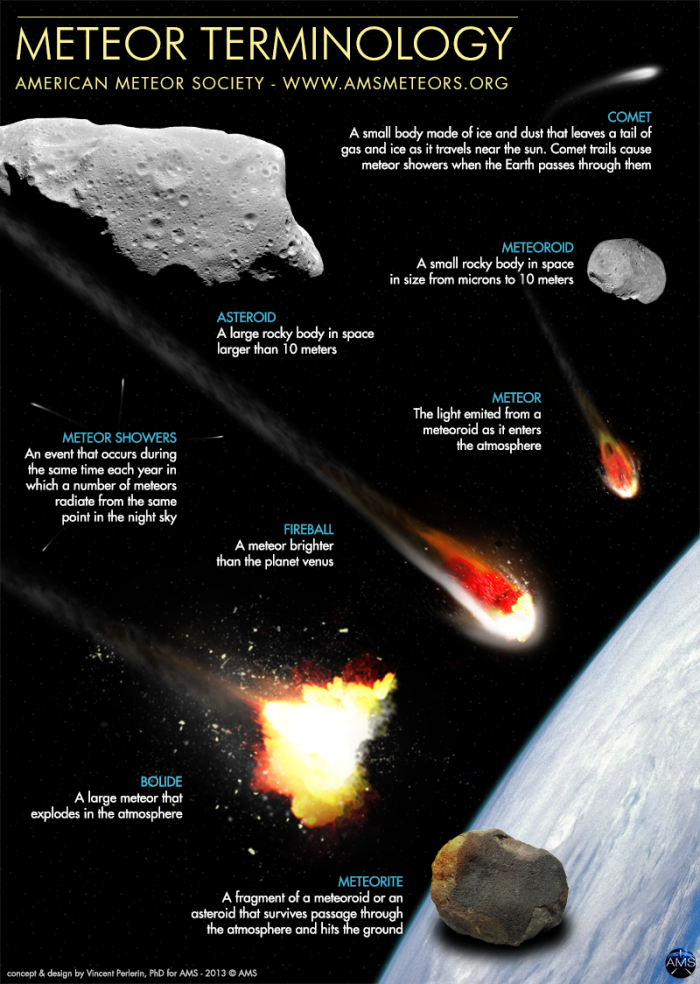
Most falling stars are extremely short in duration—lasting less than a second. It’s hard to believe that most meteors are like a grain of sand. They weigh far less than 1/100 of a pound (or, using the metric system, 1-2 grams). An average human weighs about 60,000 grams. Brighter meteors can last a few seconds or more and are simply breathtaking.
If a brilliant meteor tops Venus in brightness, they are called fireballs. These meteors are a bit bigger. Before they burn up, their size ranges from about one to 10 inches in diameter—like a small rock weighing about a pound or more. Even larger and brighter meteors that explode are called bolides. These are spectacular sights. Some are as bright as a full moon. As they explode, they suddenly fragment into a string of pearls that glow for a brief moment. As it quickly fades away, you marvel at what you just witnessed, wishing it lasted longer.
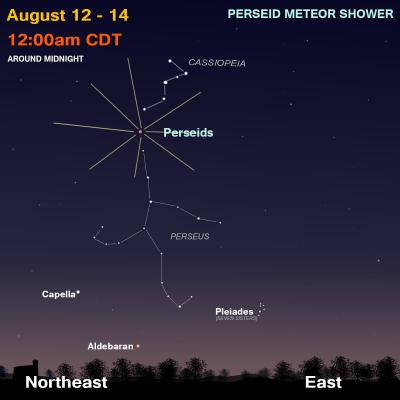 Bolide fragments can hit the Earth as meteorites. This happens often if the rock is of asteroid origin—meaning it’s more solid rock. If the bolide came from an icy comet, the chances of reaching Earth are much smaller. So how many meteorites slam into the Earth each day? Estimates range from 10 to 50 make it all the way here daily. Remember what we learned in first grade, though—the Earth is 70% water at its surface. Also, many places on Earth have no people for miles and miles, such as deserts, large forests, and the icy poles. The American Meteor Society concludes that only about two to 12 meteorites per day might ever be discovered by someone.
Bolide fragments can hit the Earth as meteorites. This happens often if the rock is of asteroid origin—meaning it’s more solid rock. If the bolide came from an icy comet, the chances of reaching Earth are much smaller. So how many meteorites slam into the Earth each day? Estimates range from 10 to 50 make it all the way here daily. Remember what we learned in first grade, though—the Earth is 70% water at its surface. Also, many places on Earth have no people for miles and miles, such as deserts, large forests, and the icy poles. The American Meteor Society concludes that only about two to 12 meteorites per day might ever be discovered by someone.
The best time to watch for Perseids will be from midnight until dawn. The Perseus constellation doesn’t clear the horizon until after midnight. This is the origin, or radiant point, for the meteors. By 5:00 a.m. CDT, Perseus is high in the sky.
The best morning will be Friday, August 13 when the Perseids peak. Still, a morning or two before and after the peak might still produce a good sky show. Sunrise is just before 6:00 a.m. on August 12-14. The moon sets early these nights and its bright glow will not impede the meteor shower—or drip. Enjoy!
Moon Buggy
Tired of potholes? Bumpy roads? Sure, who isn’t? But imagine driving on the rugged moon!
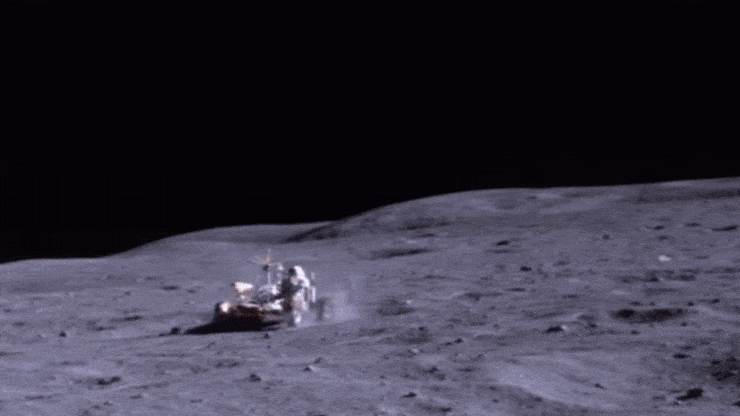
Since it was 50 years ago on July 30, 1971 that an astronaut first drove a lunar rover during the Apollo 15 mission, let’s explore some fun facts about the first car on the moon.
First, one needs to beware of countless craters, both small and large. Look out for plenty of rocks and boulders strewn about, too. Dusty roads are everywhere, nothing is paved! The gray, sandy lunar surface is called the lunar regolith. Its thickness varies, but it can be 10 to 20 feet deep.
The rover was a collapsible car. NASA engineers figured out how to fold it all up into something much smaller. The Apollo 15 rover had a little sign that said “Man's First Wheels on the Moon.”
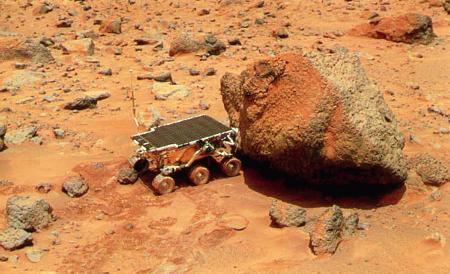 Astronaut David Scott was the first driver. The top speed was a paltry six miles per hour. The moon buggy travelled just over 17 miles on three different EVAs (Extra-Vehicular Activities). This extra distance gave the astronauts an opportunity to collect a wider variety of rocks. Then, geologists back on Earth can better examine evidence for the moon’s origin and formation; NASA had been conducting continually more science to justify the continued Apollo missions. The lunar rover was a natural extension of exploration and a necessity to keep the program going. (We humans can only walk so far—on the Earth or the moon.)
Astronaut David Scott was the first driver. The top speed was a paltry six miles per hour. The moon buggy travelled just over 17 miles on three different EVAs (Extra-Vehicular Activities). This extra distance gave the astronauts an opportunity to collect a wider variety of rocks. Then, geologists back on Earth can better examine evidence for the moon’s origin and formation; NASA had been conducting continually more science to justify the continued Apollo missions. The lunar rover was a natural extension of exploration and a necessity to keep the program going. (We humans can only walk so far—on the Earth or the moon.)
Two more rovers would fly on Apollo 16 and 17, and then the historic missions ended. The lunar rovers’ successes and failures would be studied to help design future rovers for the planet Mars. The first one to land was the Sojourner rover on NASA’s Pathfinder mission in 1997. It was tiny, about the size of a microwave oven.
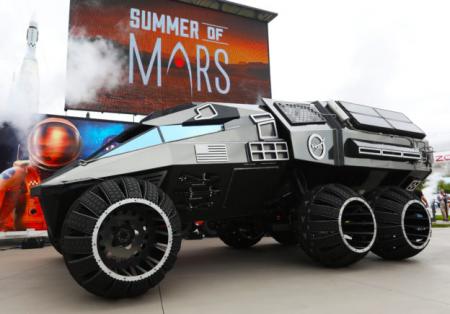 Today, both Curiosity (2012) and Perseverance (2021) are exploring the surface of the red planet. The record for a rover on Mars is Opportunity (2004), which lasted nearly 15 years! Its twin, Spirit (2004) lasted more than six years.
Today, both Curiosity (2012) and Perseverance (2021) are exploring the surface of the red planet. The record for a rover on Mars is Opportunity (2004), which lasted nearly 15 years! Its twin, Spirit (2004) lasted more than six years.
Someday, perhaps, there will be a Mars car, with future astronauts roaming across the rusty, rocky surface. NASA has already designed the prototype of what it might look like. There are plans to take people to Mars, but no one knows for sure when exactly that would take place. My best guess would be 15 to 20 years from today.
Sky Sights
Click maps to enlarge.
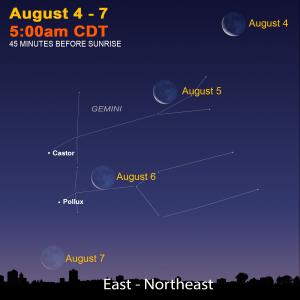 A waning crescent Moon will pass the stars of the constellation Gemini from August 4-7.
A waning crescent Moon will pass the stars of the constellation Gemini from August 4-7.
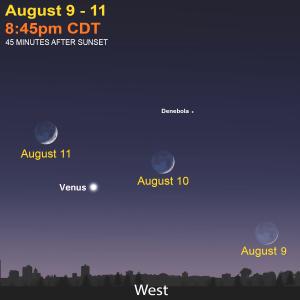 While Mars has disappeared in the sun’s glare after sunset, Venus is still very easy to spot. Step out about 30-45 minutes after sunset and observe low in the west. The Moon will help guide your way from August 9-11.
While Mars has disappeared in the sun’s glare after sunset, Venus is still very easy to spot. Step out about 30-45 minutes after sunset and observe low in the west. The Moon will help guide your way from August 9-11.
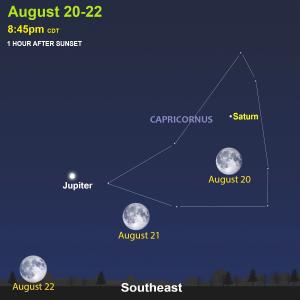 Jupiter and Saturn are up all night. The two giant worlds are at opposition (opposite the sun) this August. Saturn does it first on August 1. Jupiter is not far behind, on August 19. Our Moon “visits” these two planets from August 20-22. The specific time of the full moon is 7:02 a.m. CDT on August 22.
Jupiter and Saturn are up all night. The two giant worlds are at opposition (opposite the sun) this August. Saturn does it first on August 1. Jupiter is not far behind, on August 19. Our Moon “visits” these two planets from August 20-22. The specific time of the full moon is 7:02 a.m. CDT on August 22.
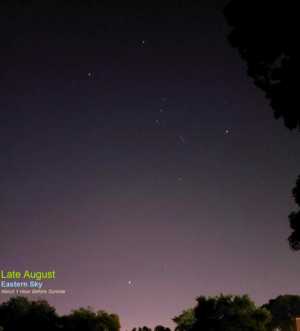 The nights grow noticeably longer in August. At the start of the month, daylight is 14 hours and 30 minutes long. By its end on August 31, the sun is above the horizon a little over 13 hours. Longer nights in late August mean you can spot Orion and the bright star Sirius low in the east as dawn starts.
The nights grow noticeably longer in August. At the start of the month, daylight is 14 hours and 30 minutes long. By its end on August 31, the sun is above the horizon a little over 13 hours. Longer nights in late August mean you can spot Orion and the bright star Sirius low in the east as dawn starts.
August Star Map
Sign Up
Receive this newsletter via email!
Subscribe
See the Universe through a telescope
Join one of the Milwaukee-area astronomy clubs and spot craters on the Moon, the rings of Saturn, the moons of Jupiter, and much more.
Follow Bob on social media
Twitter: @MPMPlanetarium
Facebook: Daniel M. Soref Planetarium

